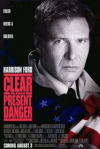What Fairfax can learn from Harrison Ford
 There’s a great scene in the Harrison Ford movie Clear And Present Danger in which he gives the US president some commonsense PR advice.
There’s a great scene in the Harrison Ford movie Clear And Present Danger in which he gives the US president some commonsense PR advice.
Under discussion is a pal of the president who has turned up dead in shady circumstances.
The advisers want the president to distance himself.
But Ford’s character Jack Ryan has another suggestion. He recommends that when the press asks the president if they were friends, he should say, “No, we were good friends.” Asked if they were good friends, he should say: “No, we were lifelong friends.”


ironically the media often completely botches it’s own PR
although Chrissie Swan’s PR team are doing an amazing job
front page Anne Davies SMH op-ed defending her right to smoke while pregnant – amazing stuff
I struggled to understand how Fairfax could run this but I guess the aim of the game this days as a media outlet is to incite social media commentary, no more, no less
Sure. Why not just merge up all the Fairfax copy? Well, one reason might be that it would not actually have a market.
The cool-aid test here is: where’s the money? And it plainly is not in web site advertising, which is here the fabulous talent of today’s management has taken the company, full pelt. (The web sites delivered by the genius Fairfax Digital team would barely pay their own rent.)
One might say that the tragedy of news media management has been that they are terribly vulnerable to poorly informed opinion expressed by commercial illiterates. And they love cool aid.